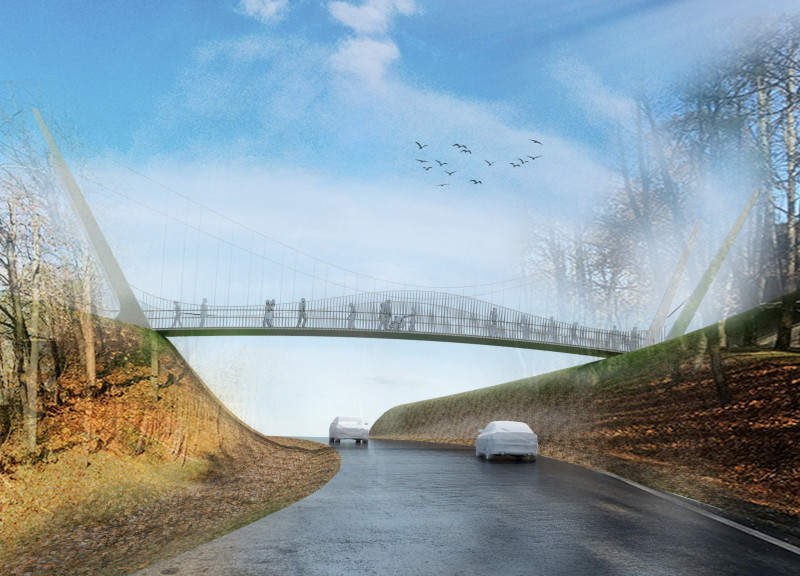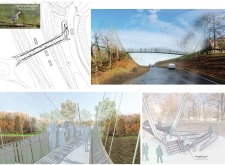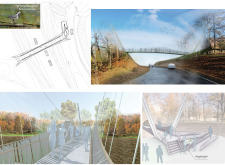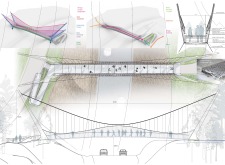5 key facts about this project
The "White Wagtail" pedestrian bridge offers a practical connection that enhances the urban landscape it occupies. Situated in a key area, the bridge focuses on making movement easy for pedestrians while blending with the environment. The design centers around accessibility and user experience, creating an open space that welcomes all individuals.
Design Elements
Central to the bridge is a vertical curtain ramp with an 8% slope and a width of 1.4 meters. This ramp makes it easy for everyone, including those with mobility challenges, to cross without difficulty. The gentle slope reflects a commitment to inclusivity, transforming the bridge into more than just a crossing point but a space that is part of daily urban life.
Structural Integrity
The bridge relies on a combination of main suspenders and supporting towers for its strength and stability. These features help create a lightweight appearance and maintain open sightlines for users. By thoughtfully considering the main structural loads, engineers ensure the bridge can withstand everyday pressures while providing safety for pedestrians.
Material Considerations
One notable aspect is the handrail, which has a diameter of 4 centimeters and is coated in copper to prevent corrosion. This choice balances durability with a clean look. Lightweight Carbon-Concrete is used for both the balustrade and slabs, supporting the overall structure without feeling heavy. The prefabricated modular system allows for quick construction and fits well within the urban setting, while steel-formed sheets address the drainage needs of the bridge.
Accessibility Features
Additional features include stairs that rise 2 meters, improving access from different points. A secondary tension cable adds extra support, enhancing the bridge's lightweight nature. Together, these elements work to create not just a structure but an engaging space for anyone crossing the bridge. Users can move freely, while the careful design details encourage them to interact with the surrounding area.
Attention to detail is evident in how structural and aesthetic elements come together, providing a functional yet pleasant experience for pedestrians.





















































